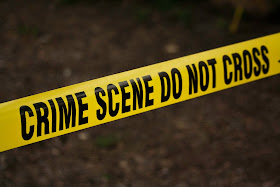It is very
unfortunate that crimes are still prevalent nowadays. How crimes are committed
also leveled up with the modernization of technology. Nevertheless, crime scene
investigators prove to be on par with technology and leverage on this to
process evidence and scrutinize crime scenes.
 |
Forensics 101: What are the Things to Do in a Crime Scene?
[ photo: pexels by kas wilcox ]
|
The initial step in
processing a crime scene is to secure the perimeter. A crime scene investigator
must identify the main area or the focal point where the crime happened. In
some instances, this could be where a body is found, or where a place is
ransacked. Once the main area is identified, the investigator usually
determines a specific radius where relevant evidence may be present.
It is a
best practice to identify a larger zone because it will be easier to condense
the crime scene area later on. It is also necessary to cordon off the area
because anybody who has access to enter and exit the crime scene has the
capability to take out the relevant evidence as well.
Conduct an Initial
Crime Scene Survey
Even before
collecting evidence and processing the crime scene, an investigator must come
up with an initial theory of what transpired to anticipate what evidence may be
collected. It is during this time that investigators strategize on how to
collect evidence.
Witnesses or persons of interest may be interviewed to obtain
substantial information. It is during this time that a lead investigator takes
photos to document certain areas of the crime scene.
Process the Crime
Scene
After an initial walk
through the crime scene, it is time to collect the evidence according to the
initial plan. All crime scene investigators processing the scene must be in
collaboration and perform the necessary documentation. There are usually strict
protocols that need to be followed in this process, including how the evidence
is handled, stored, and labeled. Compromised evidence may have a significant
impact on the investigation of the case.
PerCompromised
evidence form a Final Walk-through and Release the Crime Scene
After processing the
crime scene, the lead investigator usually performs another walk-through to
ensure that no evidence is missing. It is in this process that collected
evidence is logged for inventory, complete with a description and matching
photo. All crime scene investigators also perform a final survey before
releasing the crime scene.
The immediate persons who handle the crime scene
after its release are crime scene cleaners who perform blood clean ups and
Biohazard removal among others. They are trained technicians who have the
skills and knowledge necessary to make the area a habitable environment,
conducive for living again. Once a crime scene is released, a warrant is often
necessary to re-enter it again.
Crime scene investigators
are equipped with the skills, knowledge, and character necessary to solve even
the most puzzling crimes through the evidence they process in crime scenes.
Even with the technological advancements that cater to forensic science, it
still holds true, however, that being a crime scene investigator is not an easy
feat.

No comments:
Post a Comment
Please Leave a Comment to show some Love ~ Thanks